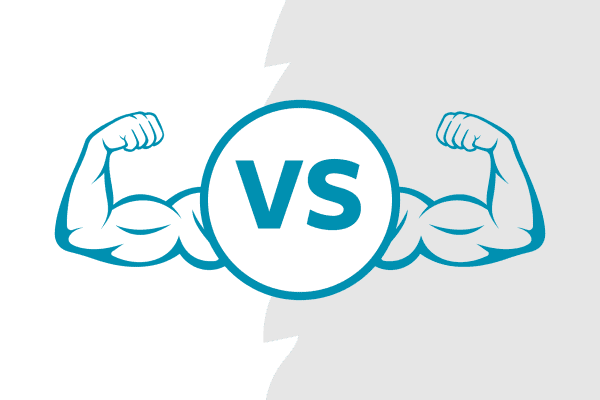Selling Online: Magento vs WooCommerce, which is better?

Filters
Results
A way to get started selling online for free, Magento was purchased by Adobe in 2018, the makers of popular software like Photoshop. Magento claims to “empower thousands of retailers and brands with the best eCommerce platforms and flexible cloud solutions to rapidly innovate and grow.” Though it sounds like the popular X-Men character, will Magento attract sales or repel your customers to the competition?
WooCommerce is a plug-in (a downloadable bit of software that adds extra features to a website) that works with WordPress, the most popular website builder in the world. More websites run on WordPress than any other platform, and WooCommerce can quickly allow those sites to sell products online.
In a head-to-head showdown between Magento and WooCommerce, which will be left behind and which will pull ahead?
Magento
Magento is one of the most popular eCommerce platforms around right now, with about 20% of all sites that sell online doing so through Magento. It comes stocked with an impressive array of features, including shipping and inventory management, customer logins with saved orders for quick reordering, and content management for writing blogs, articles, and updates. However, there’s some good and bad news when it comes to using Magento.
The good news? The Community version is free to use. All it takes to get started is a download. Setup on the other hand, can be complicated. It’s still free… If you know what you’re doing. Otherwise, you’ll need the help of a web developer.
The not-so-good news is that if you want the experts at Magento set it up for you, it’s far from free. The Enterprise version is where everything is set up and managed for you. In order to even get a price quote, you have to fill out their contact form and have them get back to you, with reported prices ranging anywhere from $15,000 to $50,000 USD… per year.
Some features of Magento include:
- The community version is OpenSource, meaning it’s free to use and is updated by the community frequently.
- Content staging and preview so you can see what the customers will see before making a product available.
- Customer segmentation so you can break customers down into groups for targeting purposes.
- Ability to add additional features as needed with a large collection of plug-ins.
When should I use Magento?
Because the initial setup can be challenging on a technical level, Magento is best-suited for larger stores; especially stores that have a lot of capital behind them. A large local retailer making the move to sell online with thousands of products will likely benefit from the features much more than a small boutique shop with a couple of handmade products.
WooCommerce
WooCommerce is extremely versatile because it integrates perfectly with what many websites are already using; WordPress. WordPress has the largest library of plug-ins and options. There are thousands of choices so that you can have your site look and act exactly as you like. If you have a website and don’t know what it was built with, it’s probably WordPress!
However, if your website is built with something else–or you don’t have one yet–getting your store setup isn’t instantaneous. One of the main benefits of WordPress is that you can design and build whatever you want. If you can think it, you can built it… Or at least a talented web developer can!
That also means it will take longer to get the site up and running though. WordPress does have plenty of templates to help you get started, but if you want a unique, personalised design, it’s better to get it customised, which will take time to create and build the design. But when you want your website to be a long-term investment, that short upfront wait is worth it!
Some features of WooCommerce include:
- Search Engine Optimisation tools built in–Get your site found on Google searches!
- Whole website backups in case of a crash. You can easily restore your website back to normal like nothing happened if something goes wrong.
- You can use any payment option for checkout, including NZ-centric options like POLiPay.
- Adding additional features is easy with thousands of pre-made plug-ins available, many for free.
- Connecting to other software is simple, like connecting your inventory to Facebook so you can sell products through Facebook shops or the website and keep an accurate inventory.
When should I use WooCommerce?
If you want a website with a custom design, already have a WordPress design, or think you might need some extra features for your online store down the line, WooCommerce is a good option for you for any store size.
Who’s the winner?
If you already have a solid business and a lot of resources to get your store online, Magento’s Enterprise Edition will handle everything for you and your site will look and behave great. For most others, including smaller, local businesses, we say that WooCommerce is the overall winner.
WooCommerce is quick to set up and easy to add features, plus you get the best content management system available so you can add pages, write articles, update news stories, and anything else you can think of. Even if you want your website to simply be a place to sell online, WooCommerce makes that straightforward, and being free to use, you won’t find anything cheaper!
For information on other popular eCommerce platforms, give our article a read, Which eCommerce Platform is right for me?




